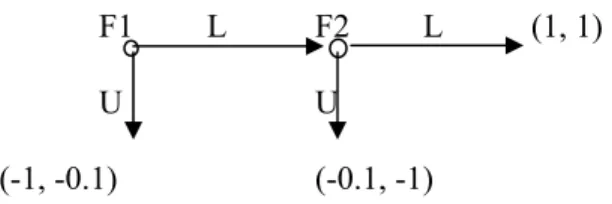And this is what Aristotle claims and this is the main point of the first inquiry. Not surprisingly, the main theme of The Politics is to design a constitution that is both fair and stable. With (a) - (c) as a starting point, the legislator can inquire: for the mixed constitution to be stable, what is the maximum allowable individual-level disobedience of the laws.
As promised, the threshold is a number (it's 0.5) and it allows for significant imperfections in law enforcement. Indeed, Aristotle's second inquiry deals with the violation of the laws by the rulers, be they rich or poor. The role of the middle class or that of income equality in the stability of the mixed constitution remains a topic of current interest (Moore 1966, Przeworski et al 2000, Boix 2003, Acemoglu and Robinson 2006).
First, to get to three from two (oligarchy and democracy), add the rule of one (this person is probably rich!) Second, to get to six from three, let each constitution have one of two goals: pursuit of common interest and pursuit of factional or vested interests; the specification of the purpose is required to satisfy part (c) of the definition of a constitution. Justice requires (a) equality of citizens in governance and (b) the pursuit of the common interest. Some are wealthy, some poor, but all are obliged (Sen, 1977b) to act in the common good of the police.
Let PA be the probability that a majority of aristocrats vote for C at the above equilibrium. Let pa = 2/3 for the aristocrats at equilibrium; the monarch is not treated as part of the aristocracy. Unlike part (a), which is true for any n, part (b) is a version of the law of large numbers.
By the same logic, a majority of a large enough state would be better than a majority of parties. The poor would use their numerical strength to redistribute the property of the rich (which is unjust as being contrary to the common interest), and the rich (few) would plunder the poor (which is also unjust). Of course, when a faction is itself the offender, the other faction(s) or state institutions (eg, the judiciary) must punish.
The summary of the paper states that the mixed constitution offers the best prospect of bringing both justice and stability. The above discussion suggests that the interest of the middle class is close to the common good. The laws that this constitution will pass will likely come close to the middle-class ideal.
Assume that members of the middle class act in self-interest, i.e. legally with probability close to 1.

On state as an association, on state and individual, households, slaves, and on monopoly
Focus: Fractional interest (unfair) Focus: Collective interest (fair) Democracy is a constitution for the poor. the citizens are poor), of the poor (of imperfect virtue pursuing factional interests under unjust laws) and for the poor. Politics is a constitution for the poor, by the poor (of perfect virtue, striving for the common good under just laws), and for the people (for the benefit of all factions). Oligarchy is a constitution of the rich (citizens are wealthy), of the wealthy (of imperfect virtue pursuing factional interests under unjust laws), and for the wealthy.
Aristocracy is a constitution of the rich and virtuous (the citizens are people of merit), by good people (of perfect virtue pursuing the common good under just laws), and for the people (for the benefit of all factions). 29 Note that the Athenian slaves were not a faction organized to compete for power and are therefore not part of the mixed constitution. Then the probability of a majority of rulers acting lawfully under mixed state will exceed the corresponding probability under mixed aristocracy.
It is then easy to show that the probability that a majority acts legally is strictly increasing in p.31 Letting p = pavg and a = aavg, it follows that if p > a > 0.5, then Pp(p) > Pa(a) where Pp(p) and Pa(a) denote the probabilities that a majority acts lawfully under mixed polity and mixed aristocracy, respectively. This creates a problem because it is possible for a small increase in the mean probability to decrease the probability of. Let q be a number in (0.5, 1) such that the probability of majority legality for the aristocracy Pa(aavg) = Pa(q | Eq), where Ex denotes the event that every citizen acts legally with the same probability x.
31 Expand the probability that a majority acts legally using the binomial distribution and then show that its derivative with respect to p is positive. It is understood that Pa(aavg) is the probability of majority legality when the average probability is aavg and not everyone acts with the same probability. Moreover, it is understood that Pp(pavg) is the probability of majority legality when the average probability is pavg and not everyone acts with the same probability.
That is, the probability of a majority of rulers acting lawfully under mixed polity will be greater than the corresponding probability under mixed aristocracy. 32 Note that an increase in average probability does not necessarily increase the probability of majority legality. Note that an increase in mean probability to q + e + f of pavg is accompanied by a decrease in majority accuracy probability to Pa(q + e + f | Eq+e+f) of Pp(pavg).